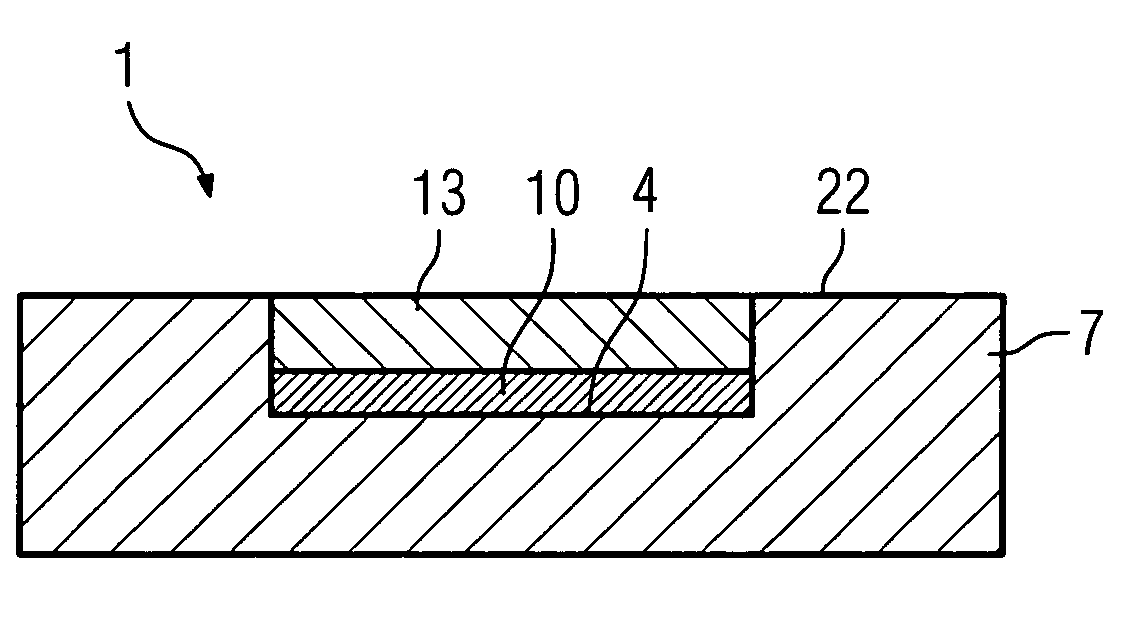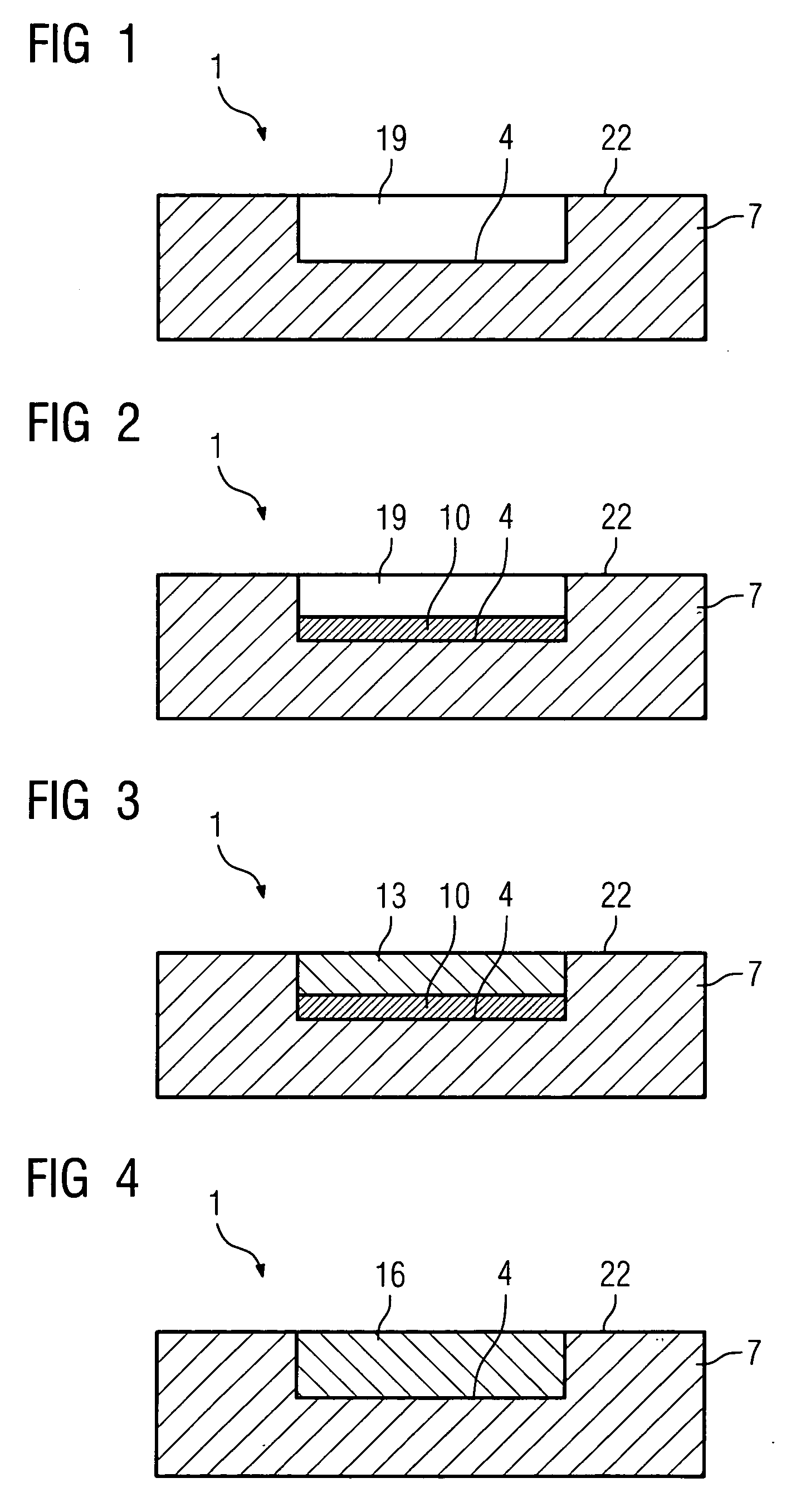Method for the production of monocrystalline structures and component
a monocrystalline structure and monocrystalline technology, applied in the direction of single crystal growth, polycrystalline material growth, condensed vapor growth, etc., can solve the problems of misalignment of applied materials, lack of mechanical properties in this region, adverse effect on the mechanical load-bearing capacity of the component as a whole, etc., to prevent recrystallization and creep in the crystal structure, the effect of reducing internal stresses
- Summary
- Abstract
- Description
- Claims
- Application Information
AI Technical Summary
Benefits of technology
Problems solved by technology
Method used
Image
Examples
Embodiment Construction
[0032]FIG. 1 shows a component 1, in particular a component for a gas turbine, such as for example a turbine blade or vane, which comprises a substrate 7.
[0033] The substrate 7 is in particular a nickel-based or cobalt-based metallic superalloy and in particular has a single-crystal structure.
[0034] New material, which is to have a single-crystal structure similar to or exactly the same as that of the substrate 7, is to be introduced either on the surface 22 of the component or in a recess 19 in the component 1.
[0035] The recess 19 is, for example, a location on the component 1 at which material has been removed on account of the presence of corrosion and / or cracks. These degraded regions were removed without leaving any residues and need to be refilled, the aim being for them to have the same mechanical properties as the substrate 7.
[0036]FIG. 2 shows the component 1 in a further process step. According to the invention, an intermediate layer 10 is applied to the base surface 4...
PUM
| Property | Measurement | Unit |
|---|---|---|
| temperature | aaaaa | aaaaa |
| temperature | aaaaa | aaaaa |
| structures | aaaaa | aaaaa |
Abstract
Description
Claims
Application Information
 Login to View More
Login to View More - R&D
- Intellectual Property
- Life Sciences
- Materials
- Tech Scout
- Unparalleled Data Quality
- Higher Quality Content
- 60% Fewer Hallucinations
Browse by: Latest US Patents, China's latest patents, Technical Efficacy Thesaurus, Application Domain, Technology Topic, Popular Technical Reports.
© 2025 PatSnap. All rights reserved.Legal|Privacy policy|Modern Slavery Act Transparency Statement|Sitemap|About US| Contact US: help@patsnap.com


